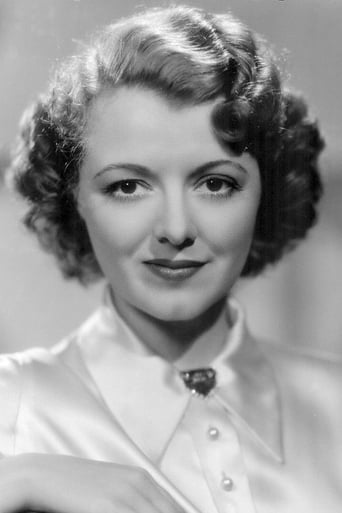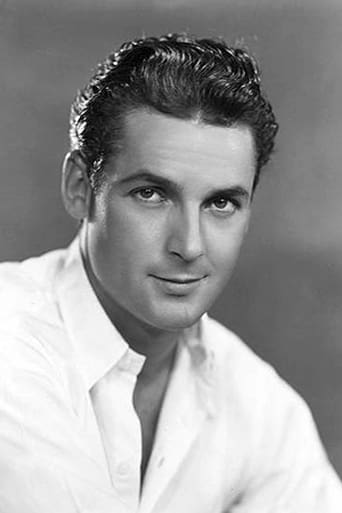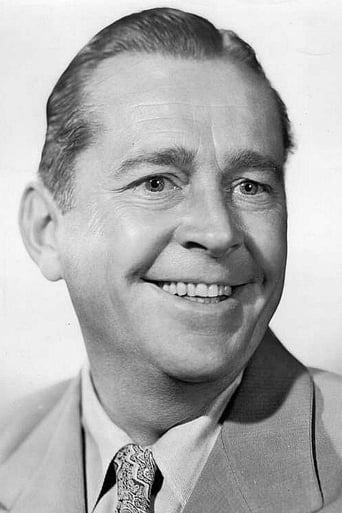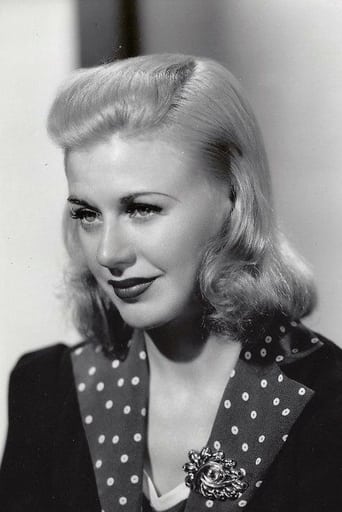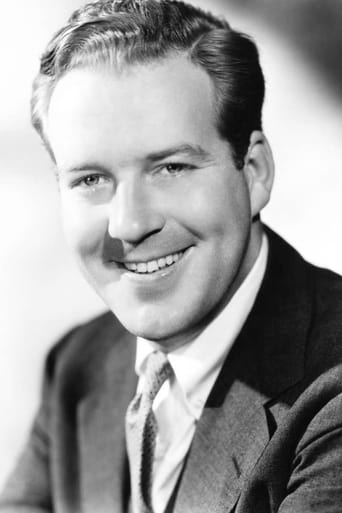2hotFeature
one of my absolute favorites!
FrogGlace
In other words,this film is a surreal ride.
Walter Sloane
Mostly, the movie is committed to the value of a good time.
vert001
Burdened with a less than exciting script, Janet Gaynor and Charles Farrell ended their twelve film partnership with the undistinguished CHANGE OF HEART. Four recent college graduates (Gaynor, Farrell, Ginger Rogers and James Dunn) travel together to New York to make their fortunes. You would think that the travails of young friends trying to make their ways in the big city would make for compelling drama, but it rarely does.Gaynor plays a saintly soul with the patience of Job, and it's a testament to her skill as an actress that she makes so treacly a role thoroughly likable. Poor Farrell acts well enough but, as became customary for him in these talkie pairings with Gaynor, is stuck playing a dumbbell who actually falls sick unto death simply because Rogers has married somebody else! Gaynor finally wins her true love by nursing him back to health. This happens in a long, long scene during which she shaves him! I don't want to blame filmmakers for taking chances, but this was one chance that didn't pay off.Ginger Rogers was in the interregnum between FLYING DOWN TO RIO and THE GAY Divorcée, meaning that she was a rather hot property but not yet a true star. This role, commonplace in thirties' cinema (heck, Claire Dodd made a career playing it), is unique in her own career and one of the few unsympathetic characters that she ever played. She probably performed it better than the film deserved, something you could say for its entire excellent cast.
MartinHafer
The film begins with a college graduation. Four friends lament that they wish they could go to New York to seek their fortune, but they haven't got the money to get there. In magical Hollywood tradition, one of their fathers gives them the money so they can all fly there. Charles Farrell, James Dunn, Ginger Rogers and Janet Gaynor are these four graduates and the story primarily focuses on Gaynor. Dunn is in love with her, but she wants to be friends. However, she is in love with Farrell, but he is smitten with selfish Rogers. An interesting little love quadrangle, huh? Through pluck and determination, Gaynor and Dunn manage to make it in the city, while Farrell has some difficulty getting a job. Rogers seems to make it "the easy way" but exactly how this happened isn't really explained in the film. All you do know is that when she does well, she appears to be "too good" for her old friends--even though Farrell continues to hold a torch for her. When he asks Rogers to marry him, she refuses--as she's found someone better. As a result, Farrell becomes despondent and sick--so sick he's on death's door. When Gaynor discovers him alone and very ill, she stays with him for weeks nursing him back to health. When he finally recovers, he not only is very grateful but also wants to marry her--having realized that Gaynor is the love of his life, not Rogers.However, although Gaynor is happy, she does begin to wonder if Farrell loves her because of a sense of obligation or only because he couldn't have Rogers. When Rogers writes to say that she did NOT marry the man she ran off with, the audience realizes that Rogers will soon return and try to take back Farrell--leading to a nifty conclusion.The film is very enjoyable and Gaynor plays her typical "girl next door" sort of role. While this and the rest of the film is rather predictable, it's done very well and you really are sucked into caring for her--you really do want it to have a happy ending. The only unusual thing about the film is Rogers. This was done just before she hit mega-stardom and plays a very unsympathetic character--one of the last of her career. Personally, I liked this because it was nice to see Ginger play someone who wasn't so sweet. Overall, the film is very well done and enjoyable, making it a bit better than just a time passer.
lugonian
CHANGE OF HEART (Fox, 1934), directed by John G. Blystone, reunites the ever popular love team of Janet Gaynor and Charles Farrell for the 12th and final time. Their union, which began with the silent romance story of SEVENTH HEAVEN (1927), expanded successfully for its time through the sound era in an attempt to recapture the magic of their initial pairing. Throughout those seven years and ten additional romancers (one as guest stars in an early musical), their efforts ranged from good to satisfactory, with popularity solely due to the loyalty of their audiences. With each passing year, tastes change in favor for better constructed stories and newcomers on the rise. By 1934, Gaynor and Farrell were on the wane, while the supporting players of James Dunn and Ginger Rogers have juicer roles, especially Rogers, cast against type, as the selfish girl who really doesn't know what she wants in life, thus, jeopardizing her friendship to get what she wants at all cost.The story linked with CHANGE OF HEART has nothing to do with medical students performing heart transplants, but the focus on two couples just graduating from a California college and leaving their roots to fulfill their life's ambition in New York City: Catherine Furness (Janet Gaynor), an orphan, yearns to be a writer. The only luck she has is obtaining employment at a salvage shop making clothes for orphaned babies under the supervision and care of Harriet Hawkins (Beryl Mercer); Chris Thring (Charles Farrell), wants to be an lawyer; Mac McGowan (James Dunn), a radio crooner like Rudy Vallee; and Madge Roundtree (Ginger Rogers), a Broadway actress. In true soap-opera tradition, Mac loves Catherine who secretly loves Chris, who loves Madge, who gives up Chris to move back to California, becoming a "companion" to wealthy producer Howard Jackson (Kenneth Thomson), in order to advance her acting career. Despondent, Chris becomes ill with high fever, leaving Catherine to nurse him back to health. After they marry, Madge, realizing the error of her ways, returns to New York to reclaim Chris, regardless of how Catherine might feel about it.During the 1960s and early 70s, TV Guide magazine used to label this version of CHANGE OF HEART in its schedule. Quite confusing since THE HIT PARADE OF 1943 (Republic) starring John Carroll and Susan Hayward has been retitled CHANGE OF HEART (taken from a hit song from that movie) for television. In Leonard Maltin's earlier edition to his "Movies on TV" book published in the 1980s, he critiques CHANGE OF HEART with a "BOMB" rating, later eliminating his review from subsequent editions. While this can be labeled a companion piece of the much better GENTLEMAN ARE BORN (Warners, 1934) starring Franchot Tone and Jean Muir, having very much the same theme, CHANGE OF HEART does have its flaws, such as accepting these slightly older principal players as college graduates; Dunn's obnoxious personality (which he is supposed to be anyway); Rogers in an unsympathetic role; extensive scene involving Gaynor nursing the bedridden Farrell back to health, each reciting some sappy dialog while she gives him a shave; or Gaynor speaking out her emotions through facial gestures as she did in her silent movies, but on the whole, it's really not that bad.What makes CHANGE OF HEART even more worthy of recommendation for film buffs is the assortment of familiar actors, whether receiving screen credit for their work or not, in smaller roles, including James Gleason as a Coney Island vendor; silent screen's Mary Carr with Jane Darwell each playing mothers during the opening graduation sequence; Gustav Von Seyffertitz as the kindly doctor; Mischa Auer as a party guest; Dick (billed as Nick) Foran taking time to sing, "Who Cares?"; and of course, Shirley Temple. Temple's performance in circulating prints that show on either Fox Movie Channel or Turner Classic Movies (TCM premiere: August 12, 2016) comes as a bitter disappointment for Temple fans due to the fact that she's hardly in the movie at all. She's actually in for a fraction of a second on the TWA airliner as a little girl who's given a paper airplane. While billed as Shirley during the closing cast listing, chances are that her scene(s) and spoken dialog were cut, an severe oversight from the film editor who didn't have the foresight this child was to become one of Hollywood's biggest/littlest legendary stars.For all it's worth, CHANGE OF HEART is very nostalgic in the way it presents itself: Imagine taking an airplane ride from California to New York in just 15 hours; the cost of 5 cents for the use of a public pay phone; earning $70 a week or paying $30 a month for an apartment. It also succeeds in recapturing New York City the way it was during the Depression era 1930s through its use of montage footage. These reflections of the times gone by makes CHANGE OF HEART, a rarely seen item from the old Fox Studio vaults, a worthy time capsule piece. (***)
drednm
Change of Heart is the last of 12 films Janet Gaynor and Charles Farrell starred in together. From the late silent period til this 1934 film, they were among the most popular of screen teams. Here they play college graduates aspiring to make it in New York City along with pals Ginger Rogers and James Dunn.Pleasant story of ambition and love among the young set. The film also boasts some solid supporting players, including Jane Darwell, Beryl Mercer (excellent as the salvage lady), Mischa Auer, Dick Foran (billed as Nick?), Irene Franklin, Lillian Harmer, Bess Flowers, Gustav von Seyffertitz, Nella Walker, Mary Carr, Mary Gordon, Shirley Temple (on the plane) and James Gleason.This was one of Rogers' last supporting parts (same year she became a star in Flying Down to Rio). She plays (she's excellent) the selfish Madge who marries a rich man rather than stick with the group and find work. This is probably Rogers' most unsympathetic role. Dunn is a bit much as the Irish crooner. Farrell plays the lovesick goon, and Gaynor (one of the most sympathetic stars of the 30s) plays the fiery redhead who keeps everything going.Nice film with a good view of New York City in 1934.
